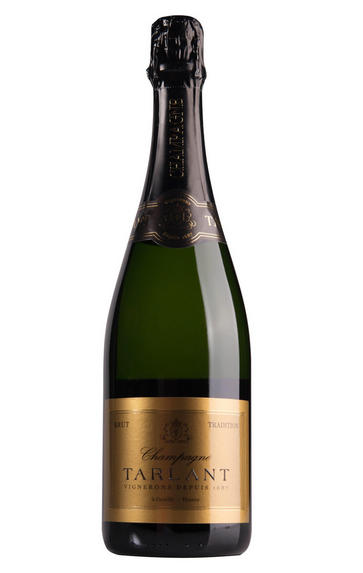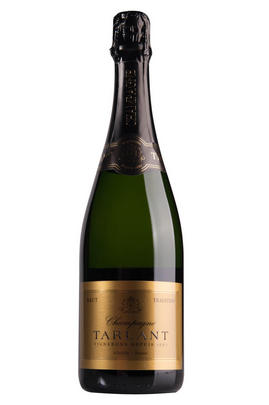
Critics reviews
Antonio Galloni - 23/12/2010
About this WINE

Champagne Tarlant
Located in the Marne Valley of Champagne, the Tarlagne family’s involvement in winemaking dates back to the early 18th century, making them one of the oldest families in the Champagne region. The estate was officially founded in 1687 and has been passed down through generations, with each generation contributing to the family’s winemaking legacy.
The winery is situated in the village of Œuilly in the Vallée de la Marne, part of the broader Champagne appellation. The Marne Valley is known for its diverse terroirs and is particularly suitable for cultivating Pinot Noir and Pinot Meunier grapes.
Champagne Tarlant is known for its commitment to traditional winemaking methods and sustainability. They emphasise minimal intervention in the vineyard and the cellar, using organic and biodynamic practices to cultivate their grapes. The estate focuses on expressing the unique terroirs of their vineyards in their Champagnes.
The family owns and manages vineyards across various terroirs within the Champagne appellation. They primarily grow the traditional Champagne grape varieties, including Pinot Noir, Pinot Meunier, and Chardonnay. Production includes a wide range of cuvées, including non-vintage (NV) Champagnes, vintage Champagnes, and special cuvées.

Brut Champagne
Brut denotes a dry style of Champagne (less than 15 grams per litre). Most Champagne is non-vintage, produced from a blend from different years. The non-vintage blend is always based predominately on wines made from the current harvest, enriched with aged wines (their proportion and age varies by brand) from earlier harvests, which impart an additional level of complexity to the end wine. Champagnes from a single vintage are labelled with the year reference and with the description Millésimé.
Non-vintage Champagnes can improve with short-term ageing (typically two to three years), while vintages can develop over much longer periods (five to 30 years). The most exquisite and often top-priced expression of a house’s style is referred to as Prestige Cuvée. Famous examples include Louis Roederer's Cristal, Moët & Chandon's Dom Pérignon, and Pol Roger's Cuvée Sir Winston Churchill.
Recommended Producers : Krug, Billecart Salmon, Pol Roger, Bollinger, Salon, Gosset, Pierre Péters, Ruinart

Champagne blend
Which grapes are included in the blend, and their proportion, is one of the key factors determining the style of most Champagnes. Three grapes are used - Pinot Noir, Chardonnay and Pinot Meunier.
26% of vineyards in Champagne are planted with Chardonnay and it performs best on the Côtes des Blancs and on the chalk slopes south of Epernay. It is relatively simple to grow, although it buds early and thus is susceptible to spring frosts. It produces lighter, fresher wines than those from Burgundy and gives finesse, fruit and elegance to the final blend. It is the sole grape in Blancs de Blancs, which are some of the richest long-lived Champagnes produced.
Pinot Noir accounts for nearly 40% of the plantings in Champagne and lies at the heart of most blends - it gives Champagne its body, structure, strength and grip. It is planted across Champagne and particularly so in the southern Aube district.
The final component is Pinot Meunier and this constitutes nearly 35% of the plantings. Its durability and resistance to spring frosts make the Marne Valley, a notorious frost pocket, its natural home. It ripens well in poor years and produces a soft, fruity style of wine that is ideal for blending with the more assertive flavours of Pinot Noir. Producers allege that Pinot Meunier lacks ageing potential, but this does not deter Krug from including around 15% of it in their final blends.



Buying options
Add to wishlist
Description
The NV Brut Tradition is a beautiful entry-level wine graced with an open, exquisite bouquet and layers of warm, radiant fruit. Peaches, pears and hazelnuts linger on the pretty finish. The Brut Tradition is 55% Pinot Noir, 37% Pinot Meunier and 8% Chardonnay, but it is the base vintage - in this case the hot 2003 - that marks the wine quite noticeably. This bottle was disgorged in July 2009. Dosage is 6 grams per liter. Anticipated maturity: 2011-2015.
Antonio Galloni - 23/12/2010
wine at a glance
Delivery and quality guarantee